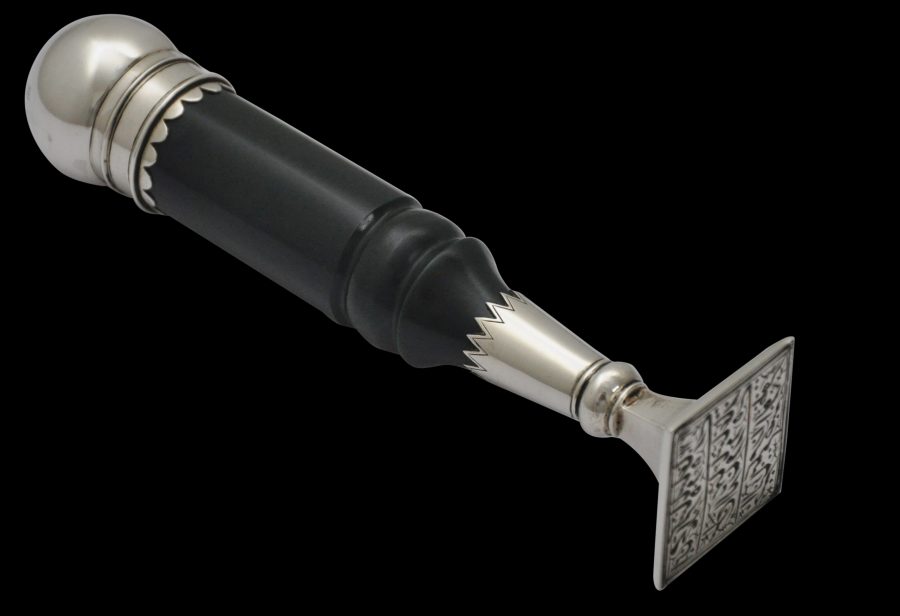Enquiry about object: 4753
The Mughal Seal of Khair un-nisa Begum Sahiba, Daughter of Bahadur Shah II, the last Mughal Emperor
Seized during the Indian Mutiny in 1857, Delhi, India dated 1845, and inscribed 'September 20, 1857, Delhi'
length: 16.2cm, weight: 146g
Provenance
private collection, UK; previously in the estate of Ronald Daubney OBE, of Linton Park, Kent, England; previously owned by General John Cockburn Hood of Stainrigg House, Berwiskshire
This relic from the dying days of Mughal India comprises the personal silver seal of Khair un-nisa Begum Sahiba, a daughter of Bahadur Shah II, the last Mughal Emperor.
The seal has been translated to read:
‘Khair un-nisa Begum, daughter of Mirza Abuzafar Sirajuddin Bahadur, Badshah, Ghazi, son of Mohamed Akbar Shah, Badshah, Gazi’ and dated 1262AH.’
The date 1262 corresponds to AD 1845.
The seal has been set into a Victorian-era mount, although given its styling and the materials used, it appears that this was done in India. The mount has been engraved with ‘Sept 20th Delhi 1857’ and the top of the handle has been engraved with a cypher that includes the initials ‘C H’ for General Cockburn Hood, who presumably took the seal as war booty.
September 20, 1857, was the last day of the Siege of Delhi, which was part of the uprising that became known as the Indian Mutiny which took place in 1857. Bahadur Shah and several of his sons were captured on that day at Humayun’s tomb. (Later they were exiled to Rangoon and the Mughal era in India was over.) There was heavy bombardment, thousands of civilian casualties and many palaces and administrative buildings were over-run. The next day, Delhi was declared by the British to have been captured. Presumably, it was on September 20 that this seal was looted from one of the palaces.
The shaft of the handle comprises a single piece of dark-green bloodstone which includes small blood-red flecks. Bloodstone, or heliotrope, is a form of dark-green chalcedony with inclusions of iron oxide or red jasper, and historically, India is the main source for bloodstone.
The seal comes with a fitted leather case which has an old label to the base which reads ‘Col. C-Hood’.
Colonel and later General Cockburn Hood saw much active service in India, and was a notable veteran of the Indian mutiny. He commanded a wing of the 1st Punjab Infantry at the capture of the fort of Jhujjur, and also was involved in the Sieges of Delhi and Lucknow. He died in 1901 which occasioned an illustrated obituary in the Illustrated London News.
Khair un-nisa Begum Sahiba was not a particularly noteworthy member of the last Mughal emperor’s family. Bahadur Shah was polygamous and had many sons and daughters, not all of whose names have been recorded or remembered.
The seal is in excellent condition.

General John Cockburn Hood, (1823-1901)
References
Illustrated London News, 10 April 1901.
Keane, M., Treasury of the World: Jewelled Arts of India in the Age of the Mughals – The Al-Sabah Collection Kuwait National Museum, Thames & Hudson, 2001.
Moura Carvalho, P., Gems and Jewels of Mughal India: Jewelled and Enamelled Objects from the 16th to 20th Centuries, The Nasser D. Khalili Collection of Islamic Art, Volume XVII, The Nour Foundation, 2010.










